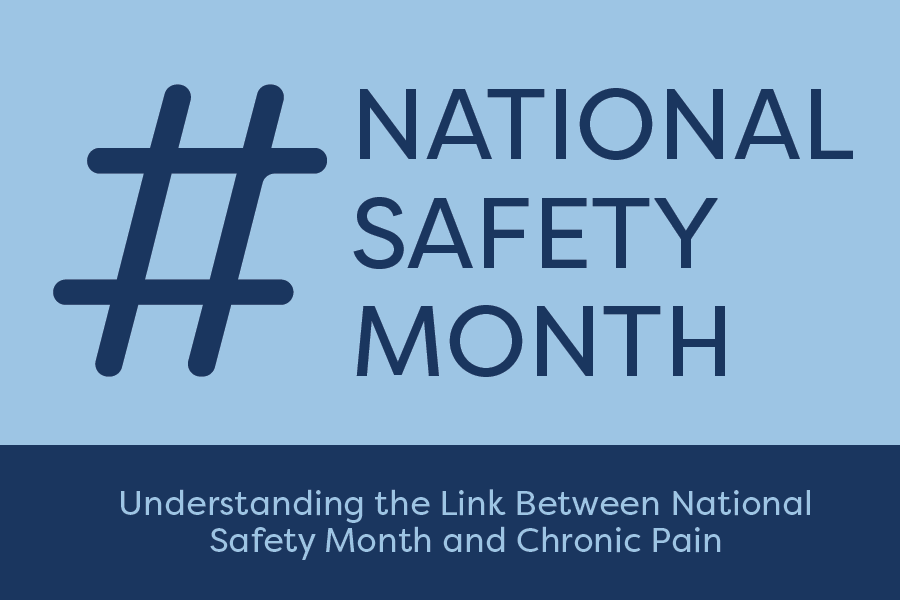Education
National Safety Month: Addressing Chronic Pain through Interdisciplinary Pain Management

National Safety Month: Addressing Chronic Pain through Interdisciplinary Pain Management
June is National Safety Month, a time when we focus on various aspects of safety to enhance the well-being of individuals in different settings. One critical area that deserves attention is chronic pain and its management. Chronic pain not only affects the physical health of individuals but also their mental and emotional well-being. By employing interdisciplinary pain management strategies lead by the Rizor Institute, we can significantly improve the quality of life for those suffering from chronic pain, ensuring their safety and overall health.
Understanding Chronic Pain
Chronic pain affects 1 in 5 adults (roughly 60 million Americans), and high-impact chronic pain currently affects about 1 in 12 adults (20 million Americans). Chronic pain is defined as pain that persists for 3 months or longer, often despite medical treatment. It can stem from various conditions such as arthritis, fibromyalgia, nerve damage, or other underlying health issues.
The Role of Interdisciplinary Pain Management
Interdisciplinary pain management involves a team of healthcare professionals from various disciplines working together to provide a comprehensive approach to pain relief.
Rizor’s Interdisciplinary Pain Management Model of Care
The Rizor Institute’s comprehensive program utilizes the services of a Medical Director, Nurse, Psychologist, Physical Therapist and Occupational Therapist working cooperatively to provide an intensive program in a single treatment location. This allows patients to be treated in an integrated and comprehensive manner based on their individual needs.
Components of Interdisciplinary Pain Management:
- Medication Management
- While medications can provide relief, they often come with risks such as dependency, side effects and worsen pain. A multidisciplinary approach, integrating various non-pharmacological strategies, can offer substantial relief while enhancing overall safety and well-being.
- Physical Therapy:
- Exercise Programs: Designed to improve strength, flexibility, and overall physical function.
- Manual Therapy: Hands-on techniques to reduce pain and improve mobility.
- Psychological Support:
- Cognitive Behavioral Therapy (CBT): Helps patients manage the emotional impact of chronic pain and develop coping strategies.
- Stress Management Techniques: Including mindfulness, relaxation exercises, and biofeedback.
- Occupational Therapy:
- Activity Modification: Guidance on modifying daily activities to reduce pain and prevent further injury.
- Assistive Devices: Providing tools and equipment to aid in performing everyday tasks safely.
- Lifestyle Changes:
- Diet and Nutrition: Implementing dietary changes to reduce inflammation and support overall health.
- Sleep Hygiene: Establishing routines to improve sleep quality, which is crucial for pain management.
The Importance of Addressing Chronic Pain for Safety
Enhanced Physical Safety: Chronic pain can impair movement and balance, increasing the risk of falls and injuries. Effective pain management can help individuals move more confidently and safely.
Mental and Emotional Well-Being: Chronic pain is closely linked to mental health issues such as depression and anxiety. A holistic approach to pain management can improve mood and emotional stability, leading to better overall health.
Improved Daily Functioning: By managing pain effectively, individuals can maintain independence and continue participating in activities they enjoy, enhancing their quality of life.
Reduced Healthcare Costs: Comprehensive pain management can prevent the need for frequent medical visits, emergency care, and invasive procedures, ultimately lowering healthcare expenses.
Success Stories in Interdisciplinary Pain Management
Case Study:
Upon admission, Sara’s adaptive functioning was low. She couldn’t stand for more than two minutes or walk a short distance. Basic tasks like filling pets’ food bowls caused her pain, and she vacillated between working a few hours a day and being unable to get out of bed. Even on better days, tasks like loading the dishwasher were painful. She also experienced suicidal thoughts.
Goals and Treatment: The Rizor Institute team aimed to increase Sara’s standing tolerance, strength, mobility, and understanding of pain neuroscience. Behavioral goals included implementing new coping mechanisms and improving her mood and anxiety. Medically, the focus was on reducing opioid dependence, reconditioning major muscle groups, and weight loss.
Treatment Details: Over 39 days, Sara had 24 individual therapy sessions, 70 hours of physical/occupational therapy, 4 medical evaluations, and 17 hours of pain neuroscience education.
Results: Sara made significant gains. Initially, she could only walk 200 feet; by Day 33, she increased this to 4,000 feet, even wearing a weighted vest during physical therapy. She lost nine pounds through a dietician-monitored low-calorie diet. Her sleep and mood improved, and her pain decreased significantly. She had been taking 160 mg of morphine daily for over 10 years but reduced this to 0 mg by Week 4, achieving a 100% decrease.
Conclusion
As we observe National Safety Month, it’s essential to recognize the profound impact of chronic pain on individual safety and well-being. Interdisciplinary pain management offers a promising path to alleviate suffering and enhance the quality of life for those living with chronic pain. By fostering collaboration among healthcare professionals and focusing on holistic treatment approaches, we can make significant strides in improving safety and health outcomes for all. This June, let’s commit to advancing our understanding and support of interdisciplinary pain management, paving the way for a safer and healthier future.


